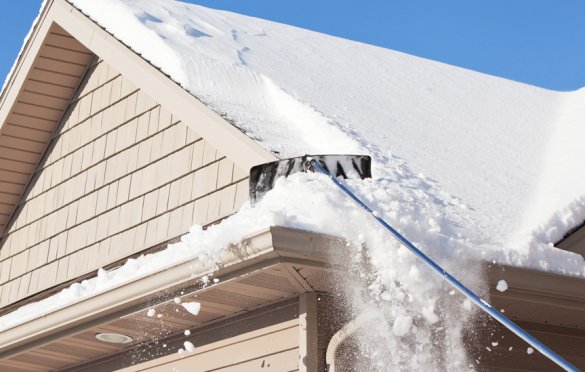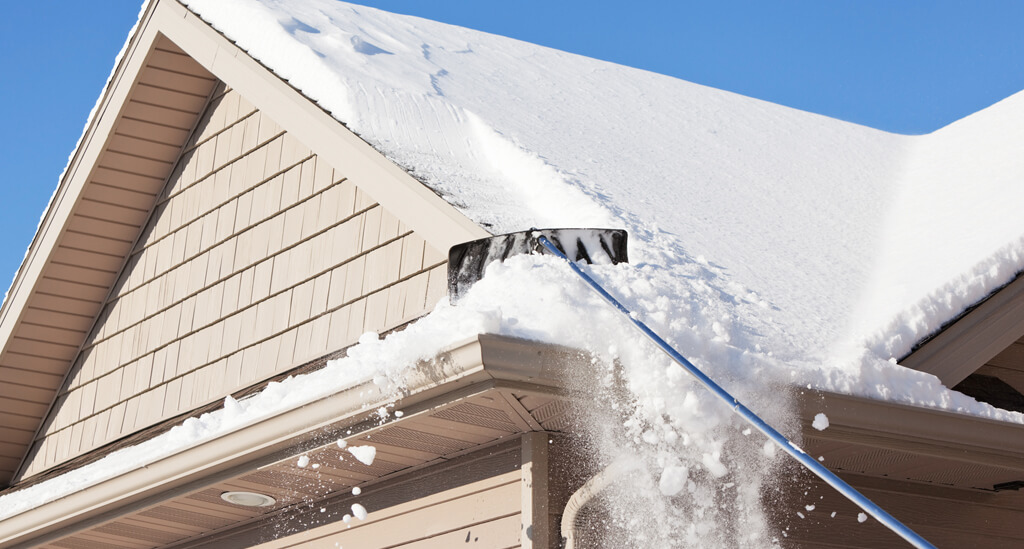
When winter arrives, it brings with it the picturesque beauty of snow-covered landscapes. However, for homeowners, it also brings the potential for roofing issues due to ice and snow. Properly preparing your roof for winter is essential to ensure that it withstands the challenges of the season and keeps your home safe and warm. In this article, we’ll provide tips for preparing different roofing types for ice and snow and detail how professional roofers can help.
Asphalt Shingle Roofs
Asphalt shingle roofs are the most common roofing type in North America due to their affordability and durability. Here’s how to prepare them for winter:
Inspection and Repairs
Before winter arrives, schedule a professional roofing inspection. Roofers can identify and address any damaged or missing shingles, which are vulnerable to snow and ice infiltration.
During the inspection, the roofer will carefully examine the condition of your shingles. Any cracked, curled, or loose shingles should be replaced promptly to prevent water from seeping through during thawing and refreezing cycles.
Clean Gutters and Downspouts
Clogged gutters and downspouts can lead to ice dams and roof leaks. Clean them thoroughly to ensure proper drainage of melted snow and ice.
Ice dams can form when snow on the roof melts and refreezes near the eaves due to poor drainage. Cleaning your gutters helps prevent these ice dams from forming and causing damage to your roofing system.
Attic Insulation
Adequate attic insulation helps maintain a consistent indoor temperature and prevents the formation of ice dams. Consult with a roofer to assess and improve your attic’s insulation if needed.
Proper insulation ensures that warm air from your home does not escape into the attic, where it can melt snow on the roof. A well-insulated attic keeps the roof’s surface cold, preventing ice dams from forming.
Metal Roofs
Metal roofs offer excellent durability and shed snow easily, but they require some maintenance to perform optimally during winter:
Snow Guards
Snow guards or snow retention systems can prevent large sheets of snow from sliding off the roof and causing hazards. Consult with a roofer to determine the right snow guard type for your metal roof.
Snow guards are particularly important if your metal roof has areas where snow accumulation can pose a risk to people or property below. Properly installed snow guards help break up snow and prevent it from sliding off in large quantities.
Insulation and Ventilation
Proper insulation and ventilation are essential to avoid condensation beneath the metal roof, which can lead to ice formation. Ensure that your roof’s ventilation system is in good condition.
Good ventilation helps maintain a consistent temperature on the roof’s surface, preventing the melt-and-freeze cycle that can lead to ice dam formation. Consult with a roofer to assess your ventilation system and make any necessary improvements.
Inspection and Maintenance
Have a roofer inspect your metal roof for any loose fasteners or damaged panels. Address any issues promptly to prevent snow and ice from penetrating the roof’s surface.
Metal roofs are known for their durability, but it’s essential to address any maintenance needs promptly to ensure their longevity. A roofer can identify and repair any potential vulnerabilities before winter sets in.
Tile Roofs
Tile roofs offer a unique aesthetic appeal and can withstand winter weather with proper care:
Inspection for Cracks or Damage
Have a roofer inspect the slate tiles for any that may be loose or damaged. Replacing or re-securing loose slates is crucial to prevent snow and ice penetration.
Tiles are known for their durability, but they can still become damaged over time, especially in areas prone to freezing and thawing cycles. A thorough inspection allows roofers to identify and address any vulnerabilities.
Clear Debris
Remove any debris, leaves, or branches from the tile roof’s surface. Accumulated debris can trap moisture and lead to ice formation.
Debris can create areas where snow accumulates, leading to ice dams. Regularly clearing debris from your tile roof helps prevent this issue and ensures proper drainage.
Seal Gaps and Leaks
Ensure that flashing and seals around roof penetrations, such as vents and chimneys, are intact. Roofers can address any gaps or leaks that may allow snow and ice infiltration.
Properly sealed roof penetrations are essential to prevent water from entering your home. Roofers can inspect these areas and reseal them as needed to maintain the integrity of your tile roof.
Slate Roofs
Slate roofs are renowned for their durability and resistance to extreme weather. To prepare them for winter, consider the following:
Inspection for Loose or Damaged Slate
Have a roofer inspect the slate tiles for any that may be loose or damaged. Replacing or re-securing loose slates is crucial to prevent snow and ice penetration.
Slate roofs are prized for their longevity, but individual slates can become loose or cracked over time. A thorough inspection allows roofers to identify and address any vulnerabilities before winter arrives.
Reinforce Flashing
Flashing around chimneys, valleys, and roof penetrations should be checked and reinforced as needed. Proper flashing prevents leaks and ice dams.
Flashing is essential for preventing water intrusion at vulnerable points on the roof. Roofers can assess the condition of the flashing and make any necessary repairs or replacements.
Snow Removal
While slate roofs can handle heavy snow loads, if you have concerns about excessive accumulation, consult with a roofer about safe snow removal methods.
Excessive snow accumulation can place a significant weight burden on any roof. Roofers can provide guidance on when and how to safely remove snow from your slate roof to prevent structural stress.
Flat Roofs
Flat roofs require special attention to prevent water accumulation, which can lead to leaks and damage:
Clear Drains and Scuppers
Ensure that drains and scuppers on flat roofs are clear of debris to allow for proper water drainage. Roofers can inspect and clean these components as necessary.
Proper drainage is essential for flat roofs to prevent water from pooling and potentially causing leaks. Regular maintenance ensures that water can flow freely off the roof.
Waterproofing and Coatings
Consult with a roofer about applying a waterproofing membrane or coatings to protect your flat roof from winter moisture and ice formation.
Waterproofing and coatings can add an extra layer of protection to your flat roof, preventing water infiltration and ice formation. Roofers can recommend suitable products and application methods.
Insulation and Snow Removal Plan
Flat roofs should have adequate insulation to prevent heat loss and ice dams. Discuss insulation upgrades with a roofer, and establish a plan for safe snow removal if needed.
Proper insulation helps maintain a consistent temperature on the roof’s surface, preventing the formation of ice dams. Roofers can assess your insulation needs and provide recommendations for efficient snow removal methods.
Conclusion
In conclusion, preparing your roof for winter is a vital part of maintaining your home’s structural integrity and comfort. Enlisting the expertise of experienced roofers is essential to ensure that your roofing type can withstand the challenges of ice and snow. By following these tips, you can enjoy a cozy and worry-free winter season, knowing that your roof is ready to weather the cold months ahead.
Pat Baker is an expert in DIYing a cozy home, a lover of hands-on renovation projects, and a writer for roofing companies in the Philadelphia area.
Andres Walsh
Related posts
Stay connected
Today's pick
- The Importance of Professional Handyman Services for Your HomeYour home is your sanctuary, a place of comfort and security, but maintaining it can be a daunting task. From routine maintenance to unexpected repairs, there’s always something that needs attention. While many homeowners might be tempted to tackle these jobs themselves, not all tasks... The post The Importance of Professional Handyman Services for Your […]

